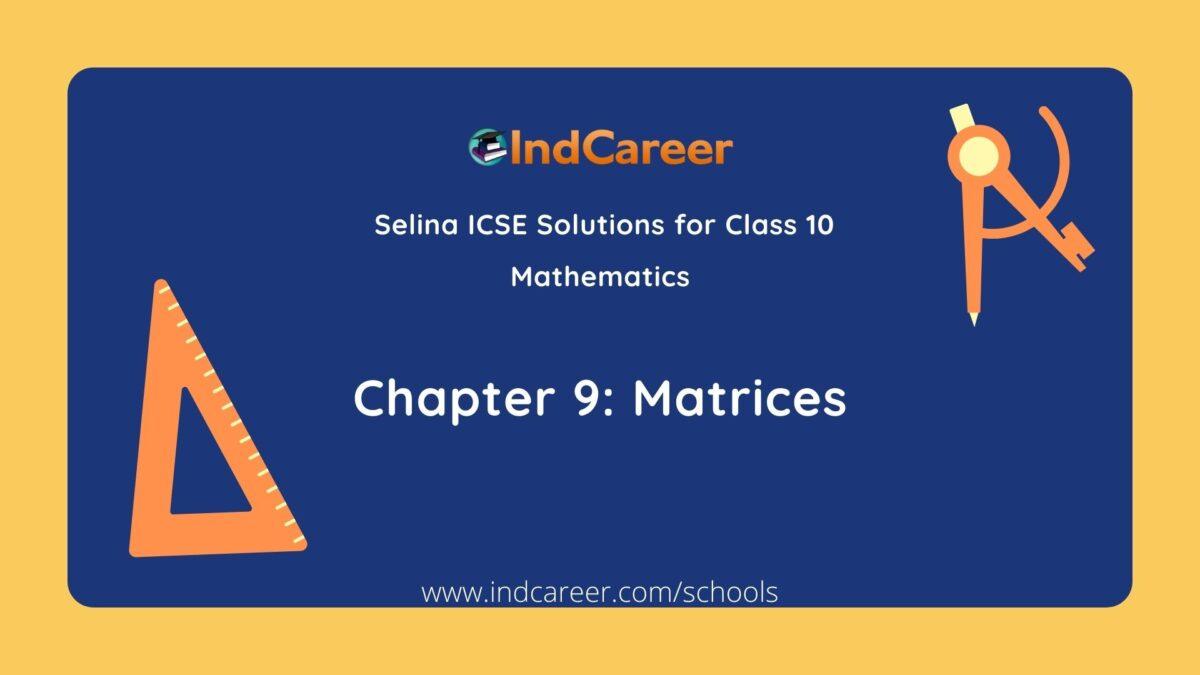Class 10: Maths Chapter 9 solutions. Complete Class 10 Maths Chapter 9 Notes.
Contents
Selina Class 10 ICSE Solutions Mathematics : Chapter 9 – Matrices
Selina 10th Maths Chapter 9, Class 10 Maths Chapter 9 solutions
Exercise 9A
Question 1.
State, whether the following statements are true or false. If false, give a reason.
(i) If A and B are two matrices of orders 3 × 2 and 2 × 3 respectively; then their sum A + B is possible.
(ii) The matrices A2 × 3 and B2 × 3 are conformable for subtraction.
(iii) Transpose of a 2 × 1 matrix is a 2 × 1 matrix.
(iv) Transpose of a square matrix is a square matrix.
(v) A column matrix has many columns and one row.
Solution:
(i) False
The sum A + B is possible when the order of both the matrices A and B are same.
(ii) True
(iii) False
Transpose of a 2 1 matrix is a 1 2 matrix.
(iv) True
(v) False
A column matrix has only one column and many rows.
Question 2.
Solution:
If two matrices are equal, then their corresponding elements are also equal. Therefore, we have:
x = 3,
y + 2 = 1 ⇒ y = -1
z – 1 = 2 ⇒ z = 3
Question 3.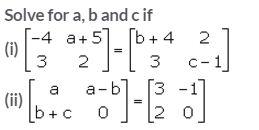
Solution:
If two matrices are equal, then their corresponding elements are also equal.
(i)
a + 5 = 2 ⇒ a = -3
-4 = b + 4 ⇒ b = -8
2 = c – 1 ⇒ c = 3
(ii) a= 3
a – b = -1
⇒ b = a + 1 = 4
b + c = 2
⇒ c = 2 – b = 2 – 4 = -2
Question 4.
If A = [8 -3] and B = [4 -5]; find: (i) A + B (ii) B – A
Solution:
Question 5.
Solution: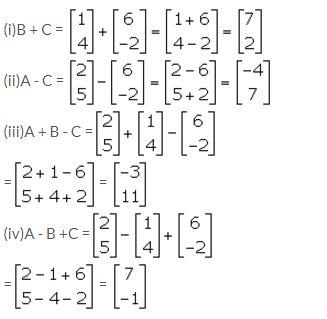
Question 6.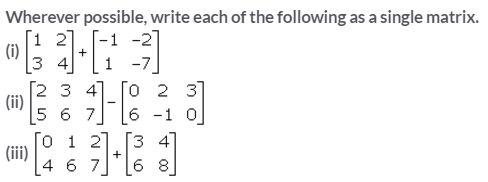
Solution:
Question 7.
Solution:
Question 8.
Solution: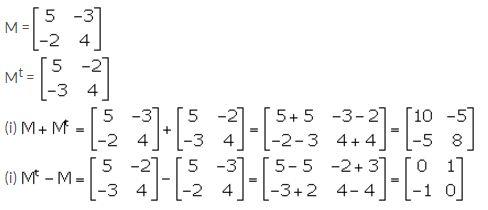
Question 9.
Solution: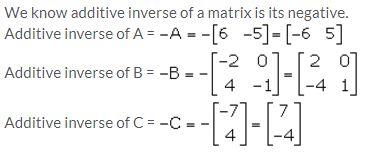
Question 10.
Solution:
Question 11.
Solution:
Exercise 9B
Question 1.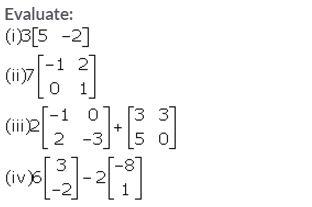
Solution:
Question 2.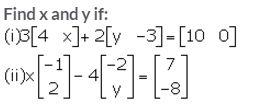
Solution:
Question 3.
Solution:
Question 4.
Solution:
Question 5.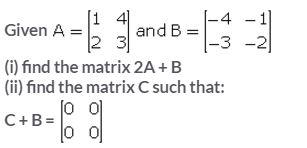
Solution:
Question 6.
Solution: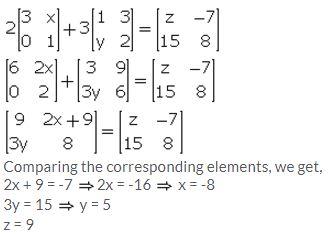
Question 7.
Solution: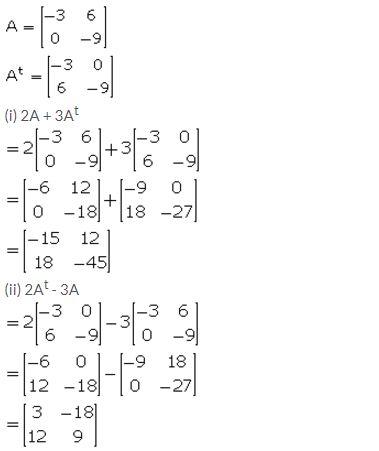
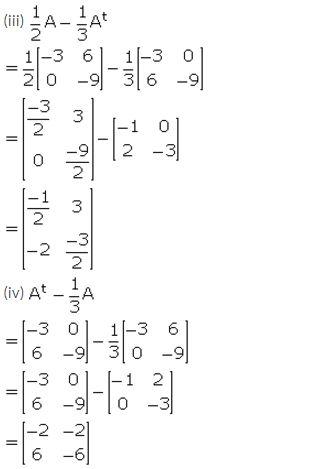
Question 8.
Solution: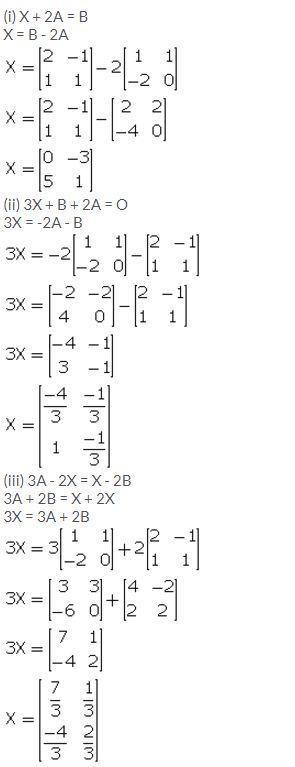
Question 9.
Solution: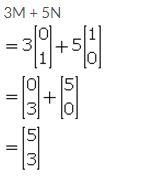
Question 10.
Solution:
Question 11.
Solution:
Exercise 9C
Question 1.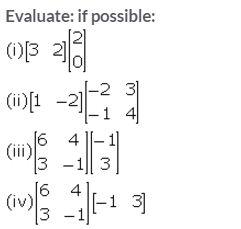
Solution: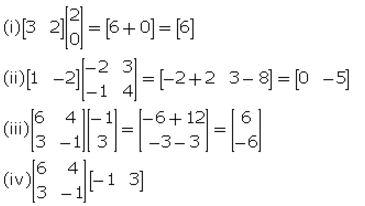
The number of columns in the first matrix is not equal to the number of rows in the second matrix. Thus, the product is not possible.
Question 2.
Solution: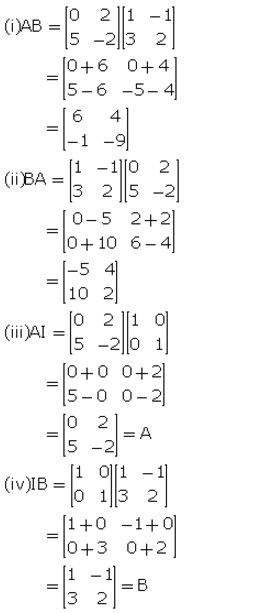
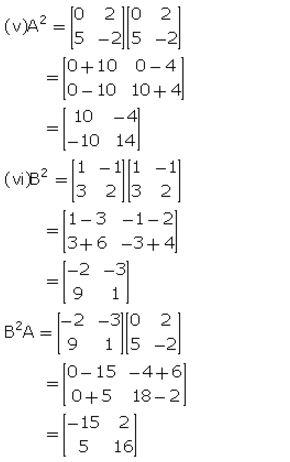
Question 3.
Solution: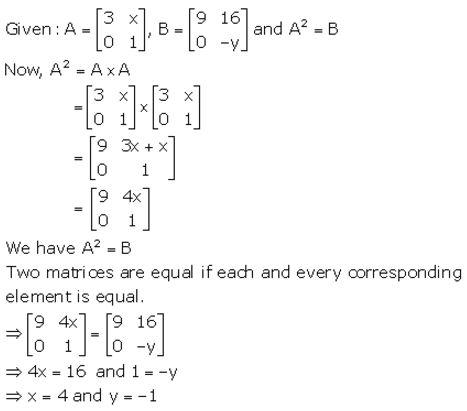
Question 4.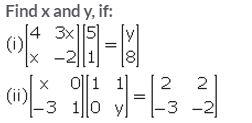
Solution: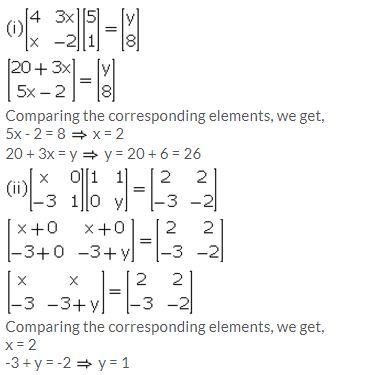
Question 5.
Solution: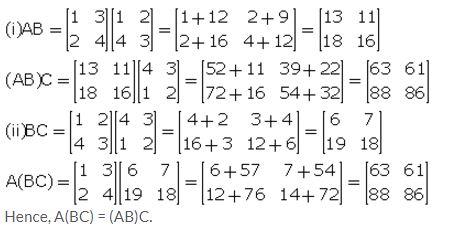
Question 6.
Solution:
(iii) Product AA (=A2) is not possible as the number of columns of matrix A is not equal to its number of rows.
Question 7.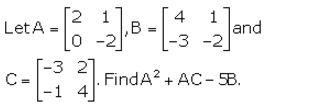
Solution:
Question 8.
Solution: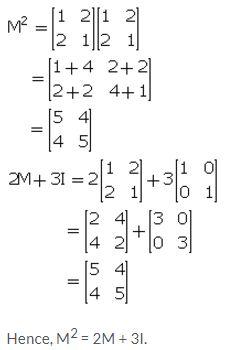
Question 9.
Solution: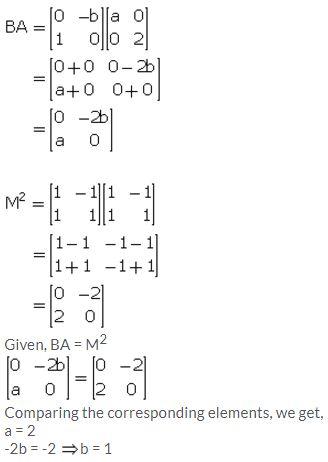
Question 10.
Solution: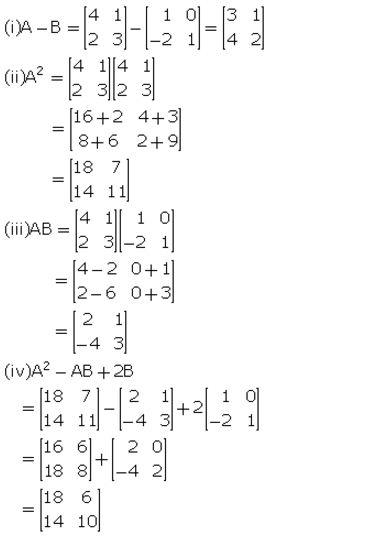
Question 11.
Solution:
Question 12.
Solution: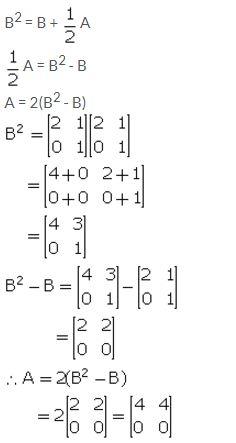
Question 13.
Solution:
Question 14.
Solution:
Question 15.
Solution:
Question 16(i).
Solution:
Question 16(ii).
Solution:
Question 16(iii).
Solution:
Question 17.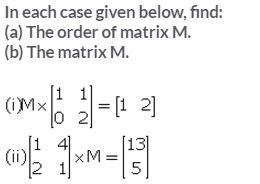
Solution:
We know, the product of two matrices is defined only when the number of columns of first matrix is equal to the number of rows of the second matrix.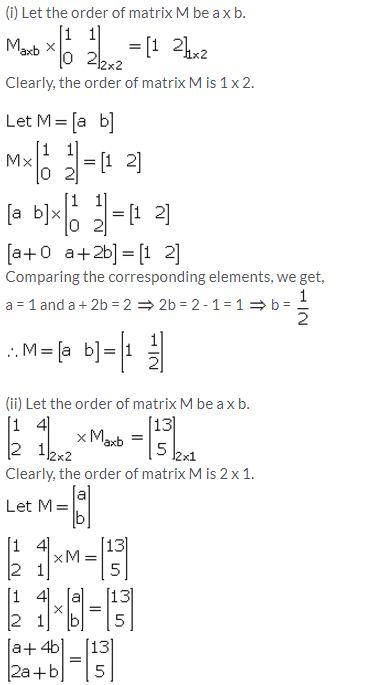
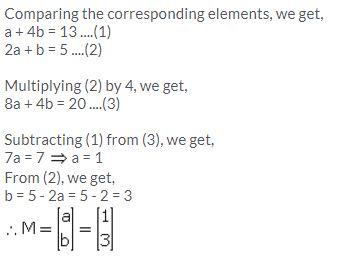
Question 18.
Solution:
Question 19.
Solution: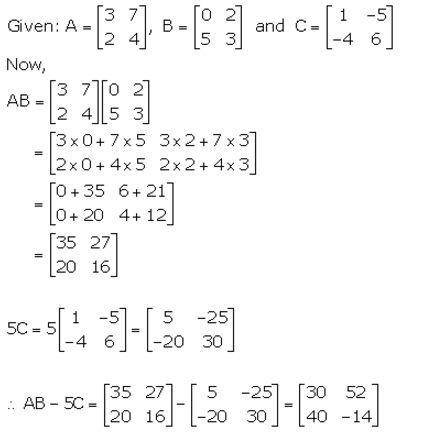
Question 20.
If A and B are any two 2 x 2 matrices such that AB = BA = B and B is not a zero matrix, what can you say about the matrix A?
Solution:
AB = BA = B
We know that AI = IA = I, where I is the identity matrix.
Hence, B is the identity matrix.
Question 21.
Solution: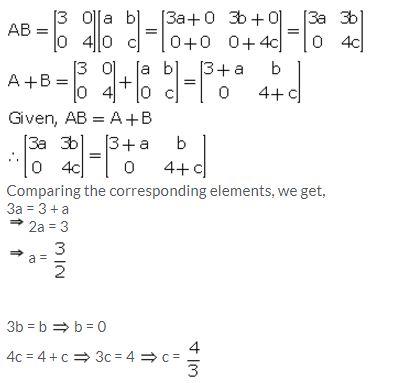
Question 22.
Solution:
Question 23.
Solution: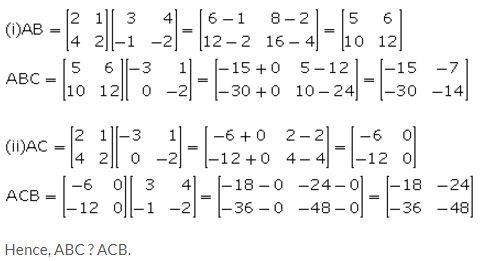
Question 24.
Solution: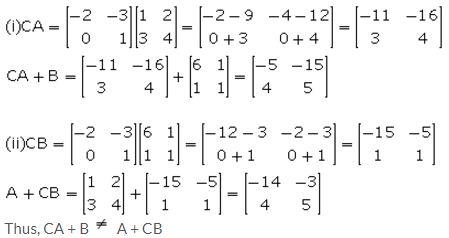
Question 25.
Solution: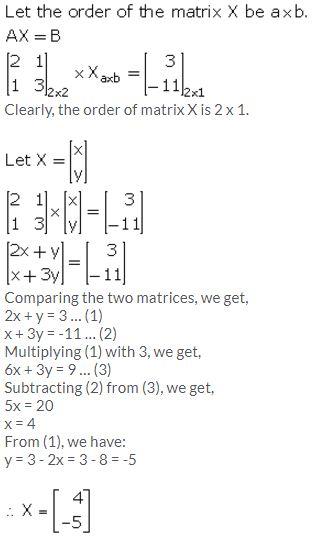
Question 26.
Solution: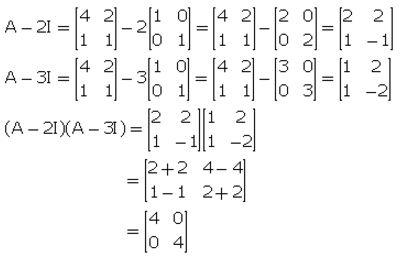
Question 27.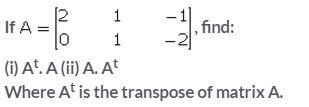
Solution: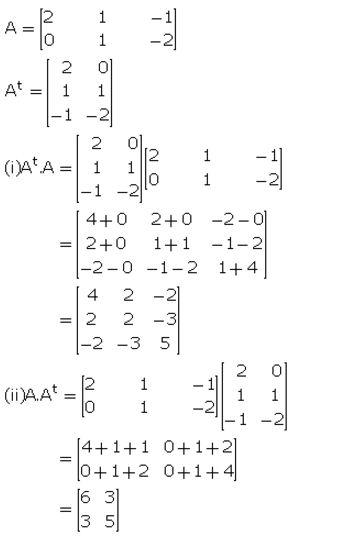
Question 28.
Solution: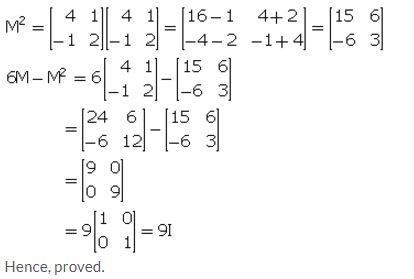
Question 29.
Solution: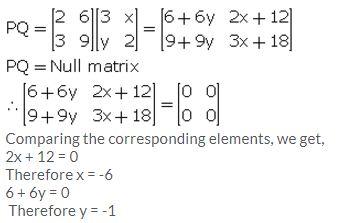
Question 30.
Solution: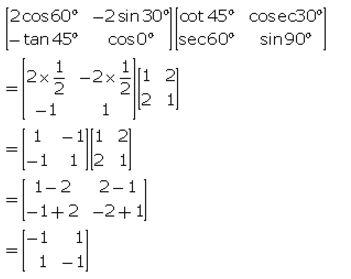
Question 31.
State, with reason, whether the following are true or false. A, B and C are matrices of order 2 x 2.
(i) A + B = B + A
(ii) A – B = B – A
(iii) (B. C). A = B. (C. A)
(iv) (A + B). C = A. C + B. C
(v) A. (B – C) = A. B – A. C
(vi) (A – B). C = A. C – B. C
(vii) A² – B² = (A + B) (A – B)
(viii) (A – B)² = A² – 2A. B + B²
Solution:
(i) True.
Addition of matrices is commutative.
(ii) False.
Subtraction of matrices is commutative.
(iii) True.
Multiplication of matrices is associative.
(iv) True.
Multiplication of matrices is distributive over addition.
(v) True.
Multiplication of matrices is distributive over subtraction.
(vi) True.
Multiplication of matrices is distributive over subtraction.
(vii) False.
Laws of algebra for factorization and expansion are not applicable to matrices.
(viii) False.
Laws of algebra for factorization and expansion are not applicable to matrices.
Exercise 9D
Question 1.
Solution: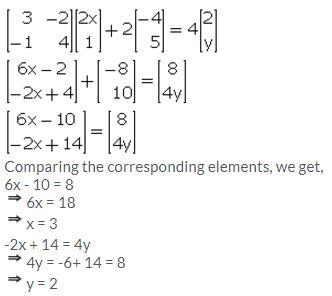
Question 2.
Solution:
Question 3.
Solution: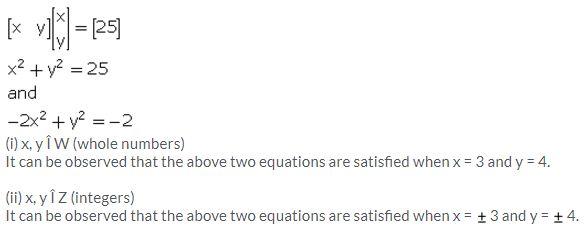
Question 4.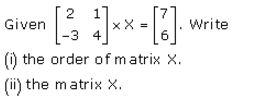
Solution: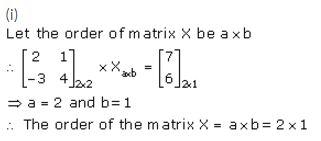
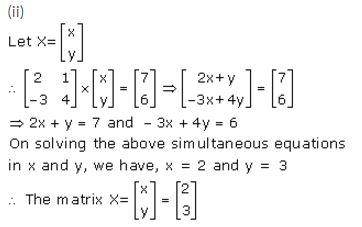
Question 5.
Solution:
Question 6.
Solution: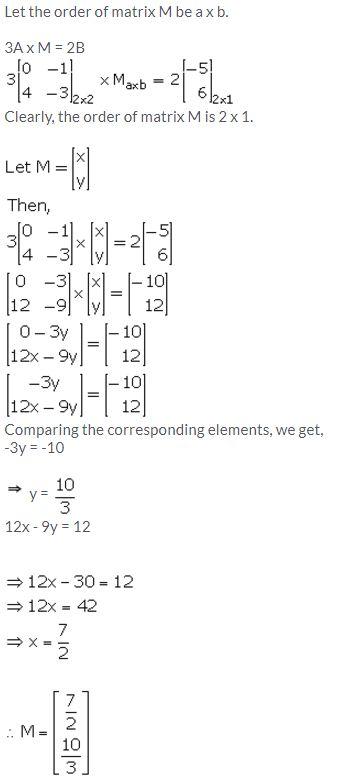
Question 7.
Solution: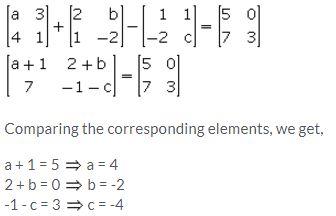
Question 8.
Solution: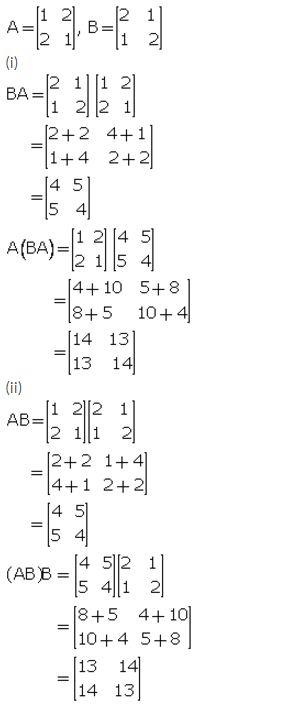
Question 9.
Solution: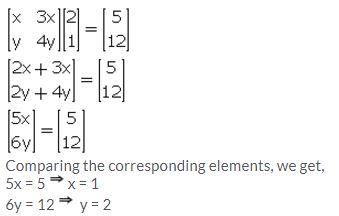
Question 10.
Solution:
Question 11.
Solution:
Question 12.
Solution: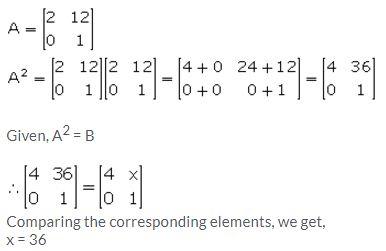
Question 13.
Solution: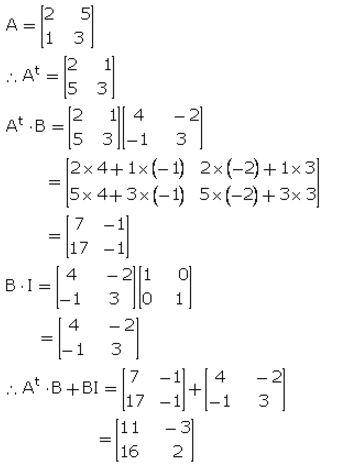
Question 14.
Solution: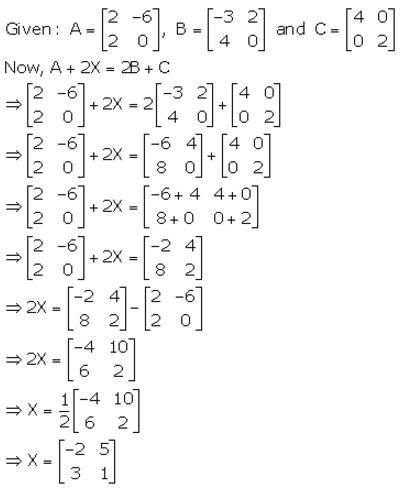
Question 15.
Solution:
Question 16.
Solution:
Question 17.
Solution: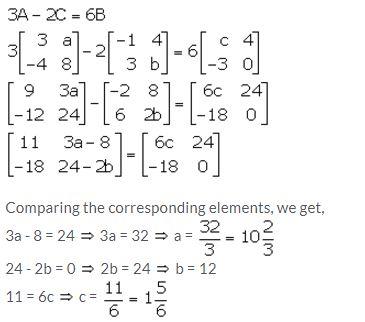
Question 18.
Solution: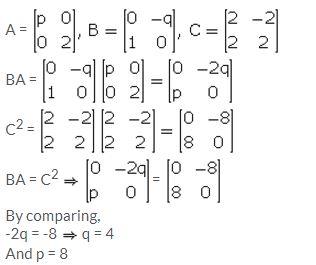
Question 19.
Solution:
Question 20.
Solution: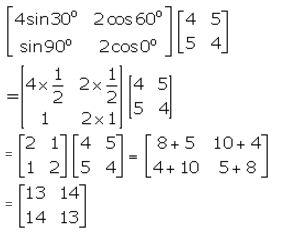
Question 21.
Solution: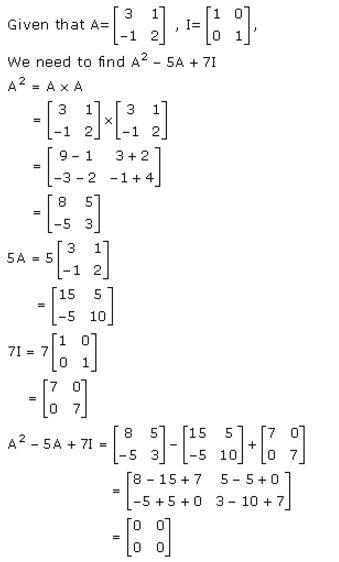
Question 22.

Solution:

Question 23.

Solution:


Question 24.

Solution:
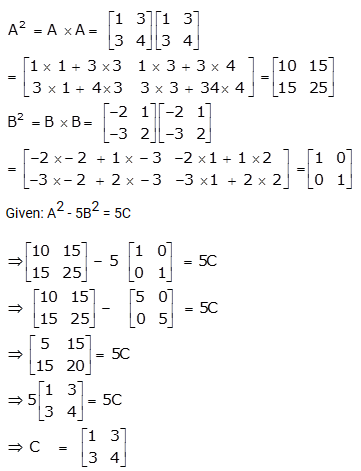
Question 25.

Solution:

Download PDF
Selina Class 10 ICSE Solutions Mathematics : Chapter 9 – Matrices
Download PDF: Selina Class 10 ICSE Solutions Mathematics : Chapter 9 – Matrices PDF
Chapterwise Selina Publishers ICSE Solutions for Class 10 Maths :
- Chapter 1 – GST (Goods and Services Tax)
- Chapter 2 – Banking (Recurring Deposit Accounts)
- Chapter 3 -Shares and Dividends
- Chapter 4 – Linear Inequations (in one variable)
- Chapter 5 – Quadratic Equations
- Chapter 6 – Solving Simple Problems (Based on Quadratic Equations)
- Chapter 7 – Ratio and Proportion (Including Properties and Uses)
- Chapter 8 – Remainder and Factor Theorems
- Chapter 9 – Matrices
- Chapter 10- Arithmetic Progression
- Chapter 11- Geometric Progression
- Chapter 12- Reflection
- Chapter 13 – Section and Mid-Point Formula
- Chapter 14- Equation of a Line
- Chapter 15- Similarity
- Chapter 16- Loci (Locus and Its Constructions)
- Chapter 17- Circles
- Chapter 18- Tangents and Intersecting Chords
- Chapter 19- Constructions (Circles)
- Chapter 20- Cylinder, Cone and Sphere
- Chapter 21- Trigonometrical Identities
- Chapter 22- Heights and Distances
- Chapter 23- Graphical Representation
- Chapter 24- Measures of Central Tendency
- Chapter 25- Probability
About Selina Publishers ICSE
Selina Publishers has been serving the students since 1976 and is one of the quality ICSE school textbooks publication houses. Mathematics and Science books for classes 6-10 form the core of our business, apart from certain English and Hindi literature as well as a few primary books. All these books are based upon the syllabus published by the Council for the I.C.S.E. Examinations, New Delhi. The textbooks are composed by a panel of subject experts and vetted by teachers practising in ICSE schools all over the country. Continuous efforts are made in complying with the standards and ensuring lucidity and clarity in content, which makes them stand tall in the industry.
